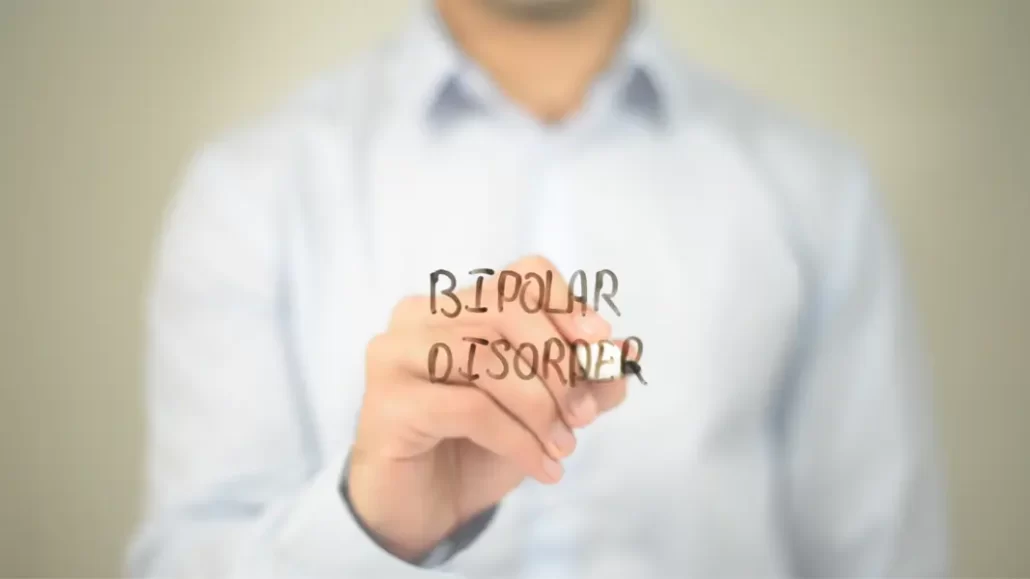Sometimes, depressed clients will ask whether they are having a manic episode as their mood starts to improve. Often, these clients have a tendency toward chronic depression or have been going through a longer depressive episode. As their depression lifts and they begin feeling better, many fear that things might be too good to be true. They may worry that they could be experiencing a manic episode. These clients may have friends or family members who have had a history of swings between depression and mania. With that in mind, they may worry that they are experiencing the same phenomenon. How can we tell the difference between a bipolar mood swing and depression lifting naturally or through treatment?
Bipolar disorders, formerly known as “manic-depressive illness,” are a mental health condition characterized by extreme mood swings. Bipolar mood swings tend to oscillate between manic episodes of elevated mood, energy, and activity to depressive episodes of sadness, low energy, and hopelessness.
There are several different types of bipolar disorders, each with its own unique set of symptoms. Bipolar I disorder is characterized by episodes of mania lasting at least one week. It may also involve episodes of depression. Bipolar II disorder is similar to bipolar I, but the manic episodes are less severe and are referred to as “hypomania.” Cyclothymic disorder involves alternating periods of hypomania and mild depression that last for at least two years. Finally, bipolar disorder with mixed features involves the presence of symptoms of both mania and depression at the same time. Accurate diagnosis and proper treatment are crucial in managing the symptoms of each type of bipolar disorder.
Exploring the symptoms of manic and depressive episodes can help differentiate them from a return to “normal” mood following an episode of depression.
Symptoms of Bipolar Mood Swings
The symptoms of bipolar mood swings can vary from person to person and are usually distinct during manic and depressive episodes. According to the Diagnostic and Statistical Manual of Mental Disorders, episodes may include the following:
- Elevated mood or irritability
- Increased energy or restlessness
- Decreased need for sleep
- Racing thoughts or distractibility
- Increased goal-directed activity
- Risk-taking behavior (e.g., spending sprees or impulsive sexual behavior)
Depressive episodes are more likely to include the following:
- Sadness or hopelessness
- Decreased energy or fatigue
- Difficulty concentrating or making decisions
- Changes in appetite or weight
- Sleep disturbances (e.g., insomnia or oversleeping)
- Thoughts of death or suicide
Causes of Bipolar Mood Swings
The exact causes of bipolar mood swings are not fully understood. However, several factors may contribute to the development of these bipolar disorders. These factors include the following:
- Genetics: Bipolar disorders tend to run in families, suggesting that there may be a genetic component to the conditions.
- Brain Chemistry: Bipolar disorders are associated with imbalances in certain neurotransmitters, such as serotonin and dopamine, which regulate mood and behavior.
- Environmental Factors: Stressful life events, such as trauma or loss, can trigger bipolar mood swings in some individuals. This most often occurs in those individuals that have an already-diagnosed or latent bipolar disorder.
- Substance Abuse: Substance abuse can trigger or exacerbate bipolar mood swings. Additionally, individuals with bipolar disorders are at higher risk for substance abuse than the general population.
Treatment Options for Bipolar Disorder
Bipolar disorders are generally chronic conditions, but they can be managed with the right treatment. Treatment options for bipolar disorders may include the following:
- Medications: Mood stabilizers, such as lithium or valproate, can help prevent manic and depressive episodes. Antipsychotic medications, such as olanzapine or risperidone, can help manage symptoms during manic or mixed episodes. Antidepressants may also help but should be used with caution as they can trigger manic episodes in some individuals.
- Psychotherapy: Psychotherapy can be an effective treatment for bipolar disorder. Cognitive behavioral therapy (CBT) can help individuals identify and change negative patterns of thinking and behavior. Interpersonal therapy (IPT) can help individuals improve their relationships and communication skills. Family-focused therapy (FFT) can help family members learn coping strategies and improve communication. Dialectical behavioral therapy (DBT) can help with regulating emotions.
- Electroconvulsive therapy (ECT): ECT may be used in severe cases of bipolar disorder when other treatments have not been effective. ECT involves applying an electric current to the brain to induce a brief seizure. This can help alleviate symptoms of severe depression or mania.
- Hospitalization: In some cases, inpatient treatment may be necessary to manage severe symptoms or ensure the safety of the individual.
- New Research: New research into ketamine- and psychedelic-assisted therapies appears promising for treatment-resistant depression, although less is known about these treatments’ efficacies for bipolar disorders.
Read more about the importance of being in therapy while taking psychiatric medication here.
Challenges of Living with Bipolar Disorder
Living with bipolar disorder can be challenging. The extreme mood swings associated with this condition can interfere with work, school, and relationships. Individuals with bipolar disorder may also experience stigma and discrimination. This can make seeking help or maintaining social support networks difficult. In addition, some people with bipolar disorder may struggle with substance abuse or other co-occurring conditions, such as anxiety or ADHD.
Read more about navigating bipolar disorder symptoms here.
It’s important for individuals with bipolar disorder to work closely with mental health professionals to manage symptoms and develop coping strategies. Self-care can also be an important component of managing bipolar disorder. This may include getting regular exercise, eating a healthy diet, getting enough sleep, and practicing relaxation techniques, such as meditation or yoga.
If you or someone you know is struggling with a bipolar disorder, it’s important to seek help. The National Alliance on Mental Illness (NAMI) provides resources and support for individuals and families affected by bipolar disorders. The Substance Abuse and Mental Health Services Administration (SAMHSA) also provides a national helpline for individuals seeking information and referrals for mental health and substance abuse treatment.
Are you interested in learning more about your own mood swings? Reach out to myTherapyNYC to find out which of our therapists would be a good fit for you!
What are some ways that you’ve managed mood swings? Join the conversation in the comments below!
- Am I Experiencing Bipolar Mood Swings? - August 3, 2023
- What is the Difference Between Substance Use and Substance Use Disorder? - December 15, 2022






2 comments
Victor,
This blog is so informative. I’m not surprised as everything you touch turns to gold. Thanks for sharing!
Can you please tell me more about how?